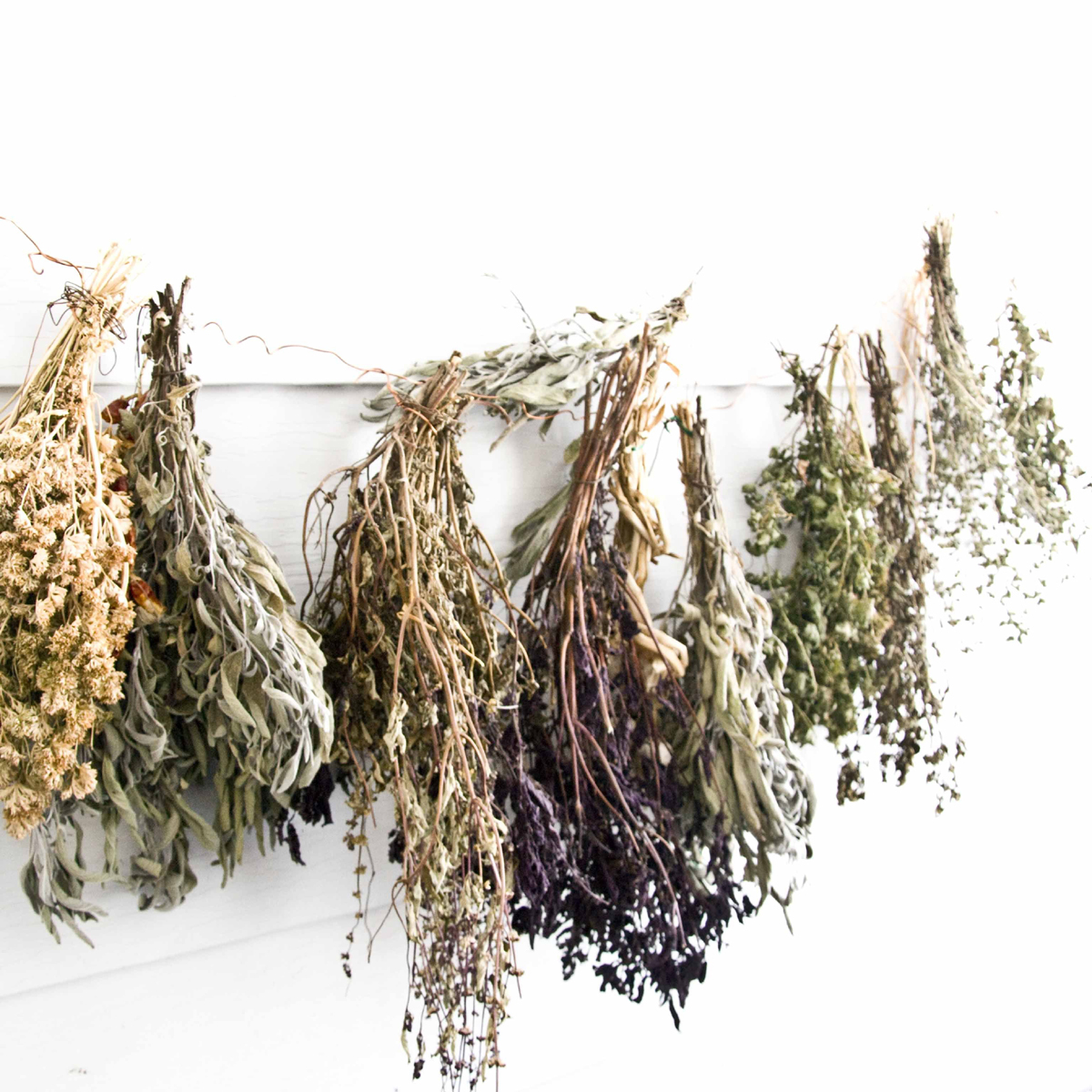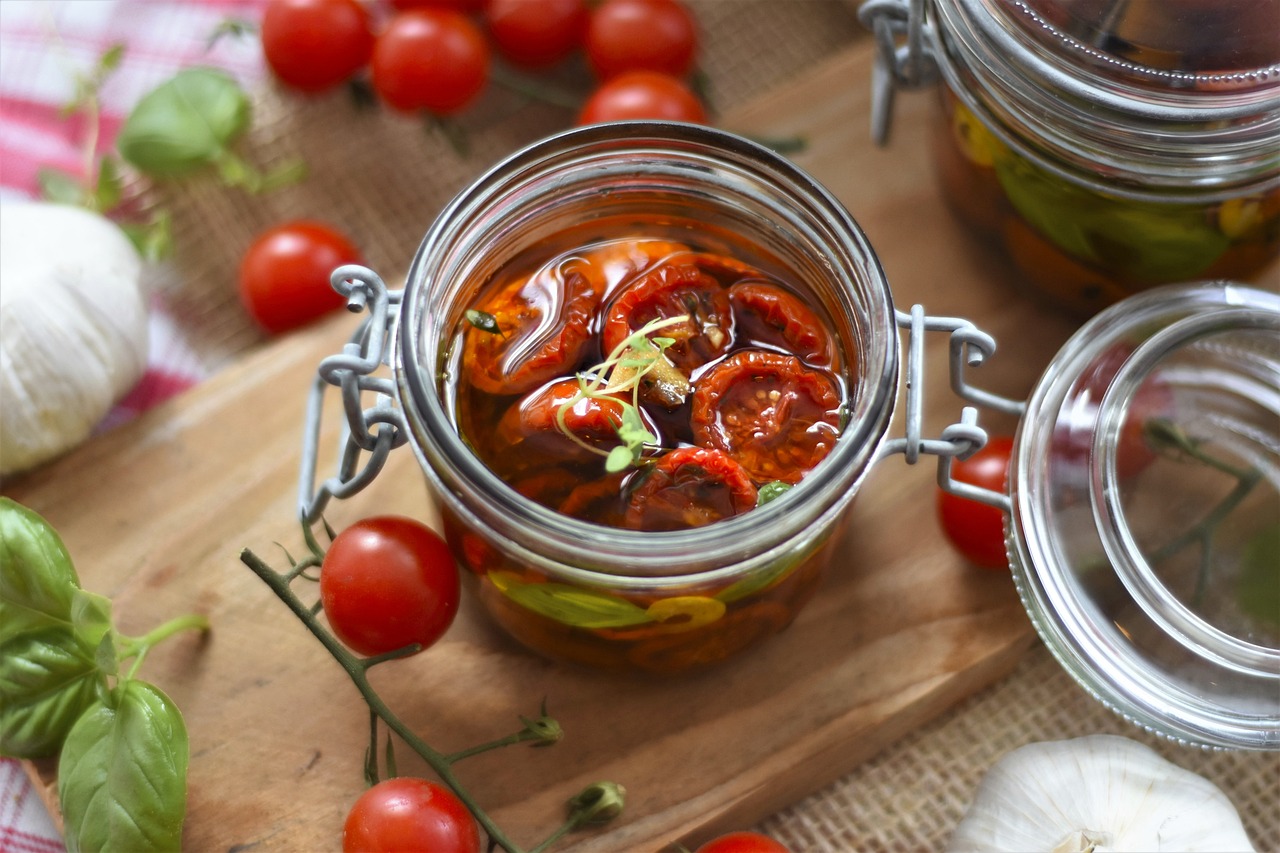Your Quick Guide to Storing and Drying Herbs

A great way to make use of your garden herbs is by drying them. Drying herbs is not just an economical solution, it’s also great to have aromatic herbs ready when you’re fixing something up in the kitchen. Among the most common ways to dry herbs is air drying. Not only is this easiest and cheapest way to dry fresh herbs, the drying process is slow enough that it doesn’t deplete the natural oils from the herbs. Air drying works well for herbs which don’t have a good amount of moisture in them such as Marjoram, Rosemary, Thyme, Bay, and dill. For herbs such as basil, mint, chives, and all other moisture dense varieties, they are best preserved if you freeze them or place them in a dehydrator.
When you’re harvesting herbs from your garden, do it before they’re flowering. If you’ve been harvesting throughout the season, your plants usually don’t have a chance to flower. If you have non-hardy herbs, they’ll usually start to decline in cooler temperatures so, it’s best to dry the herbs during the later parts of summer. When cutting herbs, do them before noon time, just enough to let the dew dry.
How to Dry Herbs
When drying herbs, start by cutting healthy branches from your plants, making sure you’re removing the diseased leaves along the way. Yellow, spotted, or those with holes in them aren’t worth drying because their flavor is likely diminished. If you see any insects, shake the plant gently because you aren’t going to thoroughly wash the stems when you’re drying the herbs.
Once you’ve picked enough herbs while the plants are dry, shake off excess soil which may cling to them. If necessary, just rinse with cool water and have the herbs dry on paper towels. Be sure you have a lot of air circulation so that the herbs dry out quickly. We herbs will easily rot or form molds so keep them dry at all times.
If you have a lot of herbs, bundle about 4-6 branches and use a string to tie them together. If the string or rubber band doesn’t loosen, it means the herbs aren’t drying well so adjust and make smaller bundles instead.
Get a paper bag with punched holes in them and label it with the name of the herb which you’re drying. Get the ends of the bag and gather them around your bundle. Tie a string to close the bag while making sure the herbs aren’t crowded. Simply finish off by hanging the bag upside down in an area that’s warm and airy. Check your bag weekly until your herbs are dried thoroughly, and ready to store.
Storing Dried Herbs
When you’re done drying herbs, they should be kept in air tight containers such as zippered plastic bags, and even attractive canning jars. No matter what you choose, be sure you have adequately labeled your containers with the herb’s name, as well as the date which you made it. Another great tip is keeping the leaves whole because they retain so much more flavor. Although you’re making precautions, be sure to check the containers often and discard the herbs at the first sight of mold.
The Author:
Joey Haentzler – A few things most important to me, are being a good dad, and husband, daily acknowledging the living Lord Jesus, seeking and sharing TRUTH. Oh yeah, traveling, Tex-Mex food, fishing, and golf are also pretty awesome activities!









I love this site, thank you for the many informative articles.. I have been coming here since 2009.
Thanks! We appreciate your support.